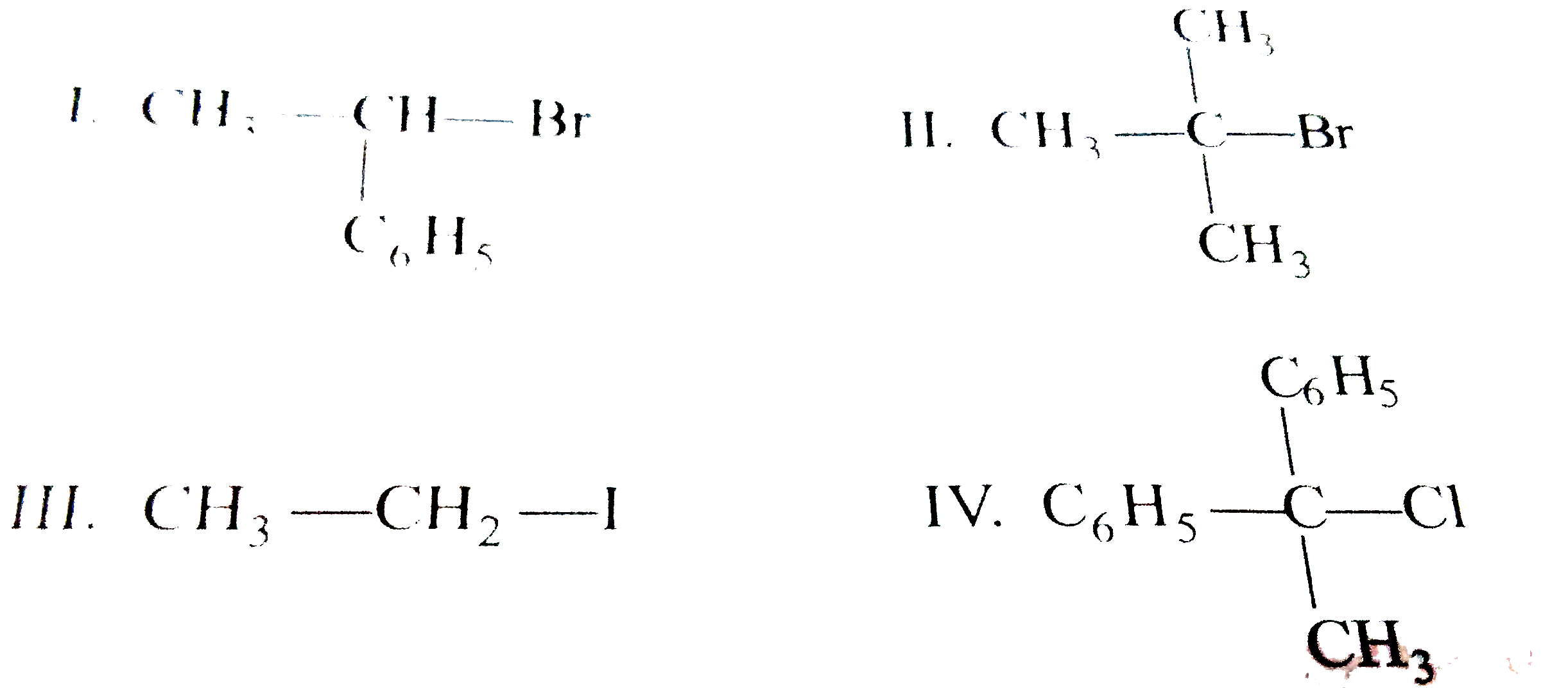Geometry of reaction intermediate in SN1 reaction is
tetrahedral
planar
triangular bipyramidal
None of these
The correct Answer is:B
Carbocation is formed during SN1 reaction which has planar trigonal geometry as it is sp2 - hybridised.
Topper's Solved these Questions
- ALKYL HALIDEBOOK - MHTCET PREVIOUS YEAR PAPERS AND PRACTICE PAPERSCHAPTER - ALKYL HALIDEEXERCISE - PRACTICE EXERCISE (Exercise 2 (MISCELLANEOUS PROBLEMS))
70 Videos
- ALKANESBOOK - MHTCET PREVIOUS YEAR PAPERS AND PRACTICE PAPERSCHAPTER - ALKANESEXERCISE - EXERCISE 2
20 Videos
- BASIC PRINCIPLES AND TECHNIQUES IN ORGANIC CHEMISTRYBOOK - MHTCET PREVIOUS YEAR PAPERS AND PRACTICE PAPERSCHAPTER - BASIC PRINCIPLES AND TECHNIQUES IN ORGANIC CHEMISTRYEXERCISE - EXERCISE 2
20 Videos
Similar Questions
Knowledge Check
Rate of SN1 reaction is :
 AS>Q>R>PBS>R>P>QCP>Q>R>SDS>R>Q>P
AS>Q>R>PBS>R>P>QCP>Q>R>SDS>R>Q>PReaction intermediate of EicB reaction is :
ACarbocationBCarbanionCBenzyneDFree radicalReaction intermediate in hydration of alkene is
AcarbanionBcarbon free radicalsCcarbocationDcarbene
Nuclephilic substitution reaction is given by those compounds which have nucleophilic groups as leaving groups. The weaker the basicity of a group of the substrate, the better is its leaving ability.
In nucleophilic substitution reactions, the basicity of leaving group should be less than the incoming nucleophilic group. Nucleophilc substitution reaction at sp3 -hybridised carbon is either bimolecular (SN2) or unimolecular (SN1). Bimolecular reaction takes place in single step, involving transition state intermediate. In SN2 reaction is preferred if the compound has less steric hindrance.
Unimolecular (SN2) reaction involves two steps and carbonium ion intermediate. Optically active substrates give recemic mixture in these reactions.
SN2 reaction involves transition state intermediate, hence it is favoured in which of the following solvents?
View SolutionNuclephilic substitution reaction is given by those compounds which have nucleophilic groups as leaving groups. The weaker the basicity of a group of the substrate, the better is its leaving ability.
In nucleophilic substitution reactions, the basicity of leaving group should be less than the incoming nucleophilic group. Nucleophilc substitution reaction at sp3 -hybridised carbon is either bimolecular (SN2) or unimolecular (SN1). Bimolecular reaction takes place in single step, involving transition state intermediate. In SN2 reaction is preferred if the compound has less steric hindrance.
Unimolecular (SN2) reaction involves two steps and carbonium ion intermediate. Optically active substrates give recemic mixture in these reactions.
Which among the following will give SN1 reaction?

View SolutionNuclephilic substitution reaction is given by those compounds which have nucleophilic groups as leaving groups. The weaker the basicity of a group of the substrate, the better is its leaving ability.
In nucleophilic substitution reactions, the basicity of leaving group should be less than the incoming nucleophilic group. Nucleophilc substitution reaction at sp3 -hybridised carbon is either bimolecular (SN2) or unimolecular (SN1). Bimolecular reaction takes place in single step, involving transition state intermediate. In SN2 reaction is preferred if the compound has less steric hindrance.
Unimolecular (SN2) reaction involves two steps and carbonium ion intermediate. Optically active substrates give recemic mixture in these reactions.
Which compound will give Walden inversion in SN2 reaction?
View SolutionSN1 reaction is faster in
View SolutionIntermediate formed during E1 reaction is -
View Solution
